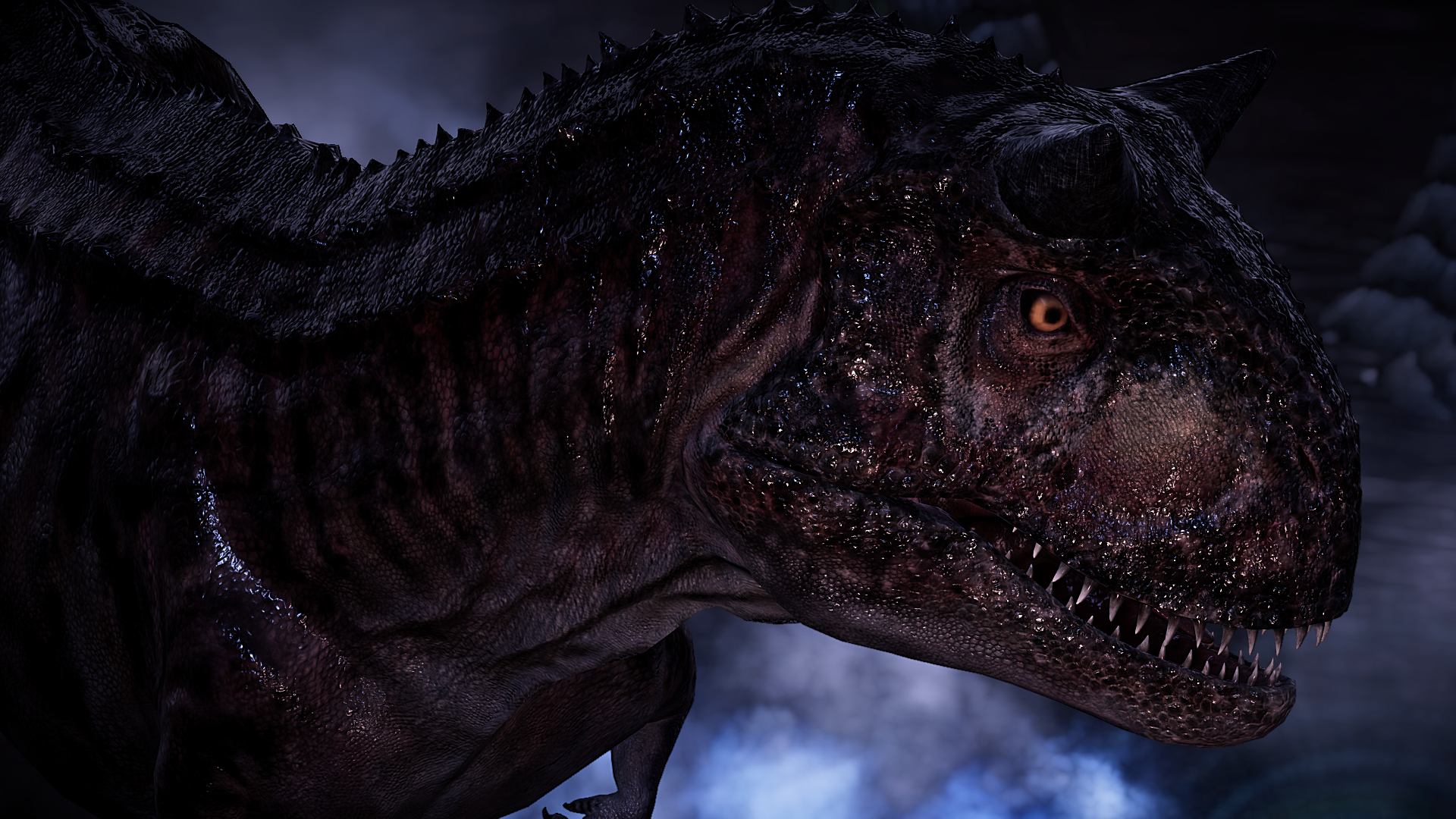


Some have been measured to be even heavier, but this is probably rare. The mobile application Jurassic World Facts gives a higher weight for this animal, 2.1 tons (1,905 kilograms).

It is built for speed and is believed to be among the fastest large theropods. To the top of its head, it can grow to 2.9 meters (9.5 feet) tall. short tons (1,360.8 kilograms) in adulthood, somewhat larger than the 7.5 to 9-meter (24.6 to 29.5-foot) fossil specimen. InGen’s specimens can reach 10.7 meters (35.1 feet) to 10.9 meters (35.8 feet) in length and weigh 1.5 U.S. This abelisaur is large, but lightly built. However, it faced difficulty in being exhibited and was kept in a restricted area up until the park closed in 2015. Sometime in the late 1980s or early 1990s, at around the same time Carnotaurus was being described and understood, International Genetic Technologies succeeded in cloning the dinosaur from ancient DNA recovered from amber samples. In other parts of the world, new abelisaurid species were discovered (such as Majungasaurus), which helped paleontologists better understand Carnotaurus. For many years, it was the best-known abelisaurid and the best-known theropod from South America since its discovery, paleontologists have discovered numerous other dinosaurs on the continent, including some of the largest dinosaurs ever known. A full description was not published until 1990. Extracting the fossil was a laborious process due to its being embedded in hematite concretion, which delayed the animal being named until 1985. The exceptional quality with which the Carnotaurus was preserved allowed paleontologists new insight into its physiology. At the time it was discovered, abelisaurids were not very well understood. Carnotaurus was discovered during the eighth Jurassic and Cretaceous Terrestrial Vertebrates of South America expedition sponsored by the National Geographic Society, which also discovered the sauropod Amargasaurus. Its discovery ushered in a new age of paleontology in the Southern Hemisphere. This dinosaur lived during the Maastrichtian age of the late Cretaceous period, between 72 and 69.9 million years ago. sastrei, is named in honor of the farm’s owner Angel Sastre. The only known species of Carnotaurus, called C. It is known from a single adult skeleton, mostly complete, which was unearthed on the farm Pocho Sastre located in La Colonia Formation of Chubut Province, Argentina. Carnotaurus (“meat-eating bull”) is a genus of moderately large abelisaurid theropod dinosaur, discovered in 1984 by Argentinian paleontologist José Fernando Bonaparte.


 0 kommentar(er)
0 kommentar(er)
